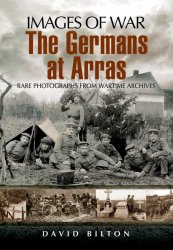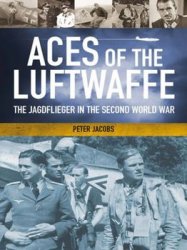Since its founding in 1935, the International Union of United Automobile, Aerospace, and Agricultural Implement Workers of America, commonly known as the United Auto Workers (UAW), has been a leading labor organization in North America. The fastest-growing union in the 1930s and 1940s, the UAW included approximately 1.5 million members in 1979, a majority of them in automobile-related manufacturing employment. In the 1980s, however, its ranks began to decline as industrial employers relocated their manufacturing operations overseas. Broadening its membership base to include workers in health care, higher education, and foreign-owned auto plants, the UAW retained about 750,000 active members throughout the 1990s. It remained, however, one of the most influential labor organizations in U. S. politics, particularly through its longstanding ties to the Democratic Party.
First chartered as an affiliate of the American Federation of Labor (AFL) in August 1935,the UAW found its greatest initial support in the midwestern industrial cities of Toledo, Cleveland, Milwaukee, and especially Detroit, which became the union’s home base. With AFL leadership taking a cautious approach to organizing industrial workers, however, the UAW pulled out of the federation and emerged in 1936 as a member of the Committee for Industrial Organization (CIO), known as the Congress of Industrial Organizations after 1938. Pivotal sit-down strikes in Flint, Michigan, in December 1936-January 1937,which shut down most of General Motors’s operations, achieved the first recognition of the union as a bargaining agent by one of the Big Three automakers. In the wake of the strikes, the UAW became the fastest-growing union in the United States; in 1940, as the Great Depression abated, the union counted almost 250,000 active members, about one-third of whom worked for General Motors, the Ford Motor Company, or the Chrysler Corporation.
In conjunction with New Deal measures such as the Fair Labor Standards Act of 1938 and the National Labor Relations Act (Wagner Act) of 1935, the UAW worked to bring a measure of stability to labor relations through collective bargaining. During World War II, however, as industrial production expanded to meet government orders, UAW leadership struggled to balance the demands of its members in the workplace and its own no-strike pledge that it had given to the federal government for the duration of the war. The union also confronted internal power struggles between its own political left - and right-leaning caucuses for control over the organization’s direction. In 1946 the right-wing caucus led by Walter P. Reuther succeeded in gaining control over the UAW, when Reuther was elected international president, a position he held until his death in 1970. Moving to purge the union’s leadership of Communist Party members to comply with the Taft-Hartley Act (1947),Reuther was effectively unchallenged as the union’s leader after 1947.
After reaching a peak of almost 1.5 million members during World War II, UAW membership slowly rebuilt its numbers after the peacetime conversion and stood at over 900,000 members in 1949, about
60,000 of whom worked in Canada. Although its membership was still concentrated in the automobile and autoparts factories of the Great Lakes region, the union expanded its rolls in the aircraft factories of the West Coast and Big Three subsidiaries in the rest of the nation.
Under Reuther’s leadership, the UAW was vital in establishing the postwar collective bargaining framework that characterized U. S. labor relations through the 1980s. Although Reuther had attempted to make production and investment decisions part of the collective bargaining process during a strike against General Motors in 1945-1946, the UAW’s demand for a 30 percent wage increase and a pledge by the company not to raise the price of its products was rejected out of hand. Contract discussions with General Motors in 1950 clarified the arrangement; the resulting agreement, known as the “Treaty of Detroit,” not only guaranteed a 20 percent rise in wages over five years but also established a pension plan and partially paid health insurance plan for UAW members in local UAW unions that represented GM workers. The contract also specified the first cost-of-living adjustments (COLA) that an industrial union had ever won in collective bargaining. In exchange for the gains in wages and benefits, however, the UAW agreed to drop its demands for a say in production decisions. From 1950 onward, then, collective bargaining achieved the security and stability that would have seemed impossible during the tumult of the 1930s.
Although the UAW’s collective bargaining muscle doubled the standard of living for its members during Reuther’s presidency, the organization was equally active outside traditional union affairs. A strategic supporter of the National Association for the Advancement of Colored People’s (NAACP) civil rights battles of the 1940s and 1950s—sometimes in opposition of its own rank-and-file sentiment— the UAW was a crucial contributor to the Southern Christian Leadership Conference (SCLC) in the 1960s. The union sent bail money to get several freedom riders out of southern jails in 1961 and did likewise for hundreds of African Americans imprisoned for their actions in the Birmingham civil rights protests in 1963. The UAW was also a major financial contributor to the historic March on Washington in August 1963, where the Reverend Martin Luther King Jr. delivered his “I Have a Dream” address. A cochair of the event, Walter Reuther was the only white labor leader to speak at the march, and UAW locals sent thousands of their members to the capital to participate.
The UAW provided financing and expertise for a number of other liberal programs in the 1960s, including its initial sponsorship of the Students for a Democratic Society (SDS) in 1961-1962. During the Great Society era under President Lyndon B. Johnson, several UAW leaders also served as advisors in shaping the War on Poverty’s community action programs to expand economic, educational, health care, and housing reforms. The union also created its own program, the Citizens’ Crusade against Poverty, in 1964 to help encourage social activism at the grassroots level in communities across the United States. Its participation in the civil rights movement, War on Poverty, and student protests earned it a reputation as one of the most influential organizations on the political left, and the UAW remained firmly committed in its support for the Democratic Party.
While its influence expanded in the political arena, the UAW continued to demonstrate its power at the bargaining table as well. In an era of constant industrial expansion and almost uninterrupted economic progress, the union negotiated a series of improved wage and benefit agreements in its contract talks. In 1955, the UAW introduced a supplemental unemployment benefits (SUB) proposal in its negotiations with the Ford Motor Company; the resulting agreement paid laid-off workers up to 60 percent of their regular take-home pay when combined with governmental unemployment compensation. The other Big Three automakers quickly agreed to similar contracts, and the SUB amounts were gradually increased in contract discussions in later years. In 1964 the UAW won an early retirement provision for workers in its negotiations with the Chrysler Corporation; the agreement quickly became standard throughout the auto industry for UAW members. Together with gradual increases in regular wages and COLA, SUB, health insurance, and pension contributions from employers, the standard of living for UAW members approximately doubled from 1950 to 1970.
After Reuther’s death in a plane crash while en route to a UAW conference center in Black Lake, Michigan, on May 9, 1970, the UAW’s leadership remained committed to its successful collective bargaining tactics and activist role in shaping social policies outside the union. With the massive economic restructuring of the U. S.industrial landscape after the oil price shocks of 1973-1974 and the deep recession and stagflation after 1978, however, the UAW’s membership roster plummeted as automakers and other manufacturers closed their doors or cut their workforces.
The union was able to maintain its rolls through 1979 at close to 1.5 million members, but the abrupt decline in sales of automobiles by domestic automakers in the late 1970s led to a sharp reduction in auto-related employment by the Big Three. By 1983 UAW membership stood at just over 1 million members; although that figure increased slightly during the modest economic turnaround in the mid-1980s, it continued to decline thereafter, stabilizing at around 750,000 members after 1992. The separation of the Canadian arm of the UAW into an autonomous labor organization, the Canadian Auto Workers (CAW) union, in 1985 contributed to the UAW’s membership decline.
In addition to the competition from foreign automakers that took a greater share of domestic auto sales away from the Big Three, U. S. automakers themselves made some crucial decisions in the wake of the energy shocks of the 1970s that also contributed to a decline in UAW strength. By 1980, General Motors had opened twenty-three production facilities outside the United States and therefore outside the jurisdiction of the UAW. The major automakers also stepped up efforts to outsource more of their component parts to outside contractors to reduce their own costs; increasingly, the outsourcing was contracted to nonunion facilities.
Between 1978 and 1993, employment in autoparts production in nonunion plants rose from 142,000 to
245,000 workers, a figure that quadrupled the amount employed in unionized auto parts plants. The transfer of production to nonunion, outside contractors also had a geographical dimension; in the 1980s, as employment in autoparts production in southeastern states jumped 44 percent, the UAW’s traditional bastion of support in the Midwest witnessed a 30 percent decline in the same sector.
Given the economic changes that transformed the U. S. economy in the 1980s, the UAW joined many other unions in concession bargaining in the hope of saving the jobs of its members. Its participation in the government bailout of the Chrysler Corporation in 1979—when its concessions helped to bring the automaker back from bankruptcy—was but one example of the UAW’s efforts in this area. More typically, however, the UAW was forced to limit or concede its demands for increases in SUB, COLA, and wage increases in the early 1980s in a far more contentious atmosphere. With the federal government issuing a series of antilabor decisions through the National Labor Relations Board in the 1980s, UAW leaders spoke of a breakdown of the labor relations bureaucracy that had been in place since the 1950s.
Indeed, the focus of labor-management relations in the 1980s turned to joint programs that depended on company and union participation to increase worker productivity and product quality. Every auto manufacturer instituted some sort of employee involvement or total quality management program with the input of the UAW; GM went the furthest with the establishment of its new division, Saturn. When it started production at its new Spring Hill, Tennessee, factory in July 1990, both company and union heralded a new era of labor relations based on consensus-based decision making in the plant. Although the UAW’s involvement in Saturn was still a far cry from Reuther’s vision of a union deeply involved in corporate decision making, the UAW was nevertheless able to help preserve thousands of its members’jobs by actively participating in efforts to raise quality and productivity in the work force.
The UAW was frustrated, however, in its attempt to unionize the U. S. production facilities of foreign automakers in the 1980s and 1990s, a workforce that had increased to 8 percent of all primary auto employment in the United States by 1993. These so-called transplant factories represented a major challenge to the future of the UAW as it attempted to retain its status as the leading labor organization in the United States. Although the union was able to gain a foothold at joint ventures, such as the GM-Toyota New United Motors Manufacturing, Inc. (NUMMI) division and the Ford Motor Com-pany-Mazda AutoAlliance project, foreign-owned plants remained impervious to UAW organizing throughout the 1990s.
The union encountered more success in its efforts to organize health care workers, state employees, educational workers, and other professional workers. By 2001, UAW locals included about
48.000 state employees in Indiana and Michigan,
5.000 members of the National Writers Union, and workers at twenty colleges and universities. The large majority of the union’s membership, however, continued to be found in automobile, autoparts, heavy truck, aerospace and defense, and heavy equipment manufacturing facilities.
Timothy G. Borden
See also American Federation of Labor and Congress of Industrial Organizations; Automotive Industry; Collective Bargaining; Democratic Socialism; General Motors; Industrial Revolution and Assembly Line Work; Job Security; Manufacturing Jobs; Maquiladora Zone; National Labor Relations Act; Pensions; Quality Circles; Retirement; Reuther, Walter; Strikes; Total Quality Management
References and further reading
Borden, Timothy. 2000. “Maybe I Should Forget the Union and the Factory: Gender and the Fight for Allegiance in UAW Local 12,Toledo.” Labor History 41,no.2:133-151.
Boyle, Kevin. 1995. The UAW and the Heyday of American Liberalism. Ithaca, NY: Cornell University Press.
Boyle, Kevin, ed. 1998. Organized Labor and American Politics, 1894-1994. Albany: State University of New York Press.
Carew, Anthony. 1993. WalterReuther. Manchester: Manchester University Press.
Dubofsky, Melvyn. 1994. The State and Labor in Modern America. Chapel Hill: University of North Carolina Press.
Dudley, Kathryn. 1994. The End of the Line: Lost Jobs, New Lives in Postindustrial America. Chicago: University of Chicago Press.
Gabin, Nancy. 1990. Feminism in the Labor Movement: Women and the United Auto Workers, 1935-1975. Ithaca, NY: Cornell University Press.
Gindin, Sam. 1995. The Canadian Auto Workers: The Birth and Transformation of a Union. Toronto: James Lorimer and Company.
Goode, Bill. 1994. Infighting in the UAW: The 1946 Election and the Ascendancy of Walter Reuther. Westport, CT: Greenwood Press.
Graham, Laurie. 1995. On the Line at Subaru-Isuzu: The Japanese Model and the American Worker. Ithaca, NY: Cornell University Press.
Green, William C., and Ernest J. Yanarella, eds. 1996. North American Auto Unions in Crisis: Lean Production as Contested Terrain. Albany: State University of New York Press.
Lichtenstein, Nelson. 1995. The Most Dangerous Man in America: Walter Reuther and the Fate of American Labor. New York: Basic Books.
Nelson, Daniel. 1994.“How the UAW Grew.” Labor History 35,no.1:5-24.
-. 1995. Farm and Factory: Workers in the Midwest,
1880-1990. Bloomington: Indiana University Press.
Sugrue, Thomas. 1996. The Origins of the Urban Crisis: Race and Inequality in Postwar Detroit. Princeton: Princeton University Press.
UAW Web Site.2001. “Who We Are: A Profile of UAW Membership by Sector.” Http://www. uaw. org/ about/members. html (cited November 29).
Zieger, Robert. 1995. The CIO, 1935-1955. Chapel Hill: University of North Carolina Press.




 World History
World History









